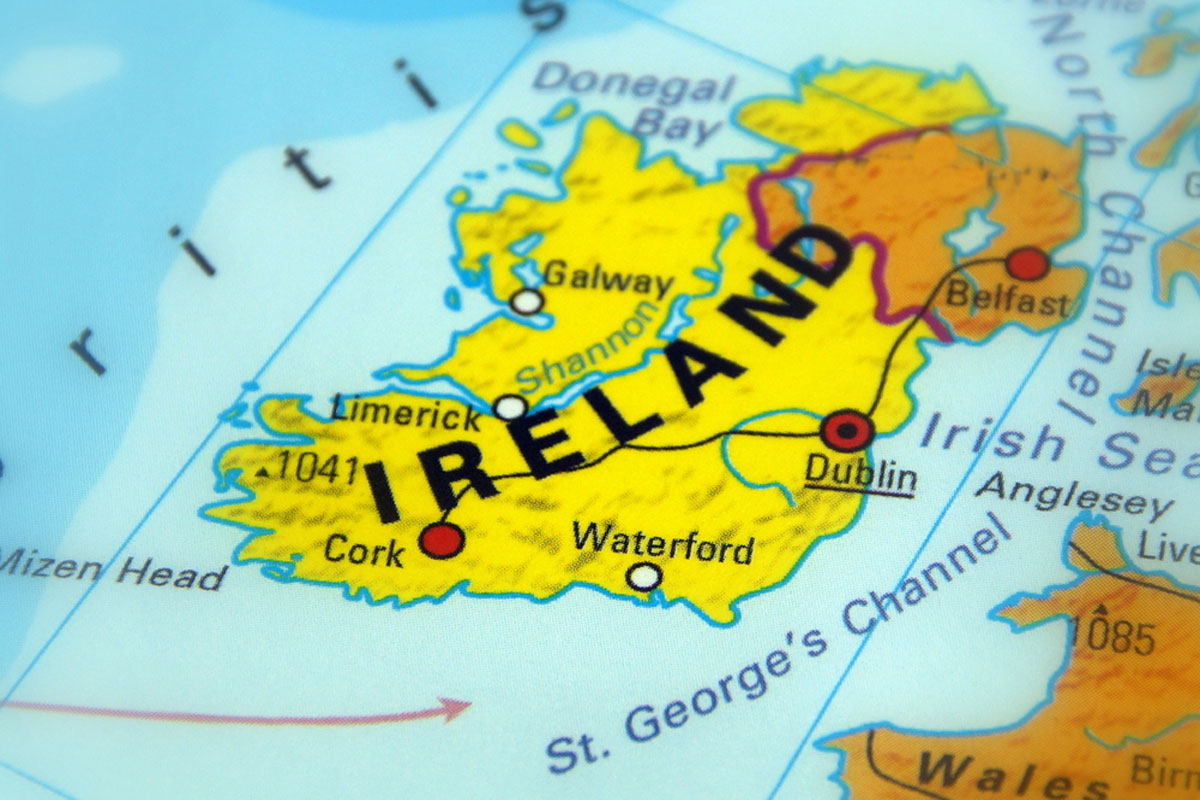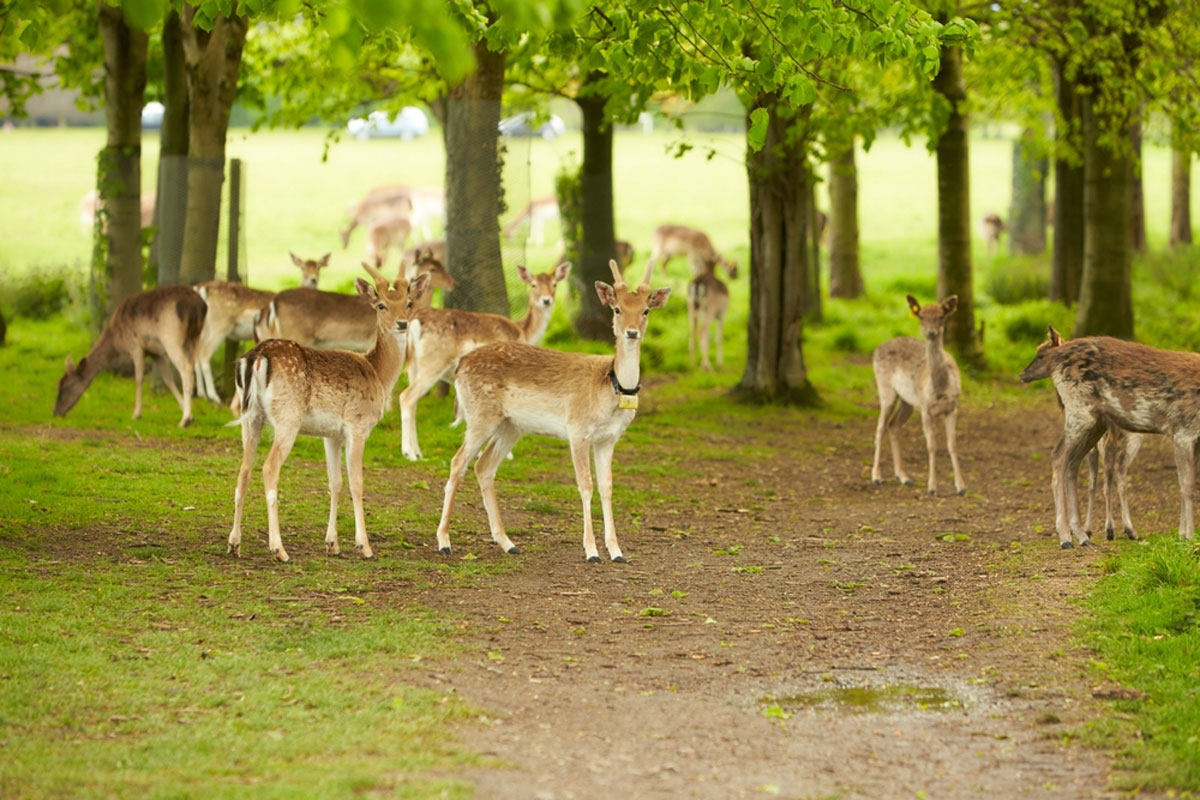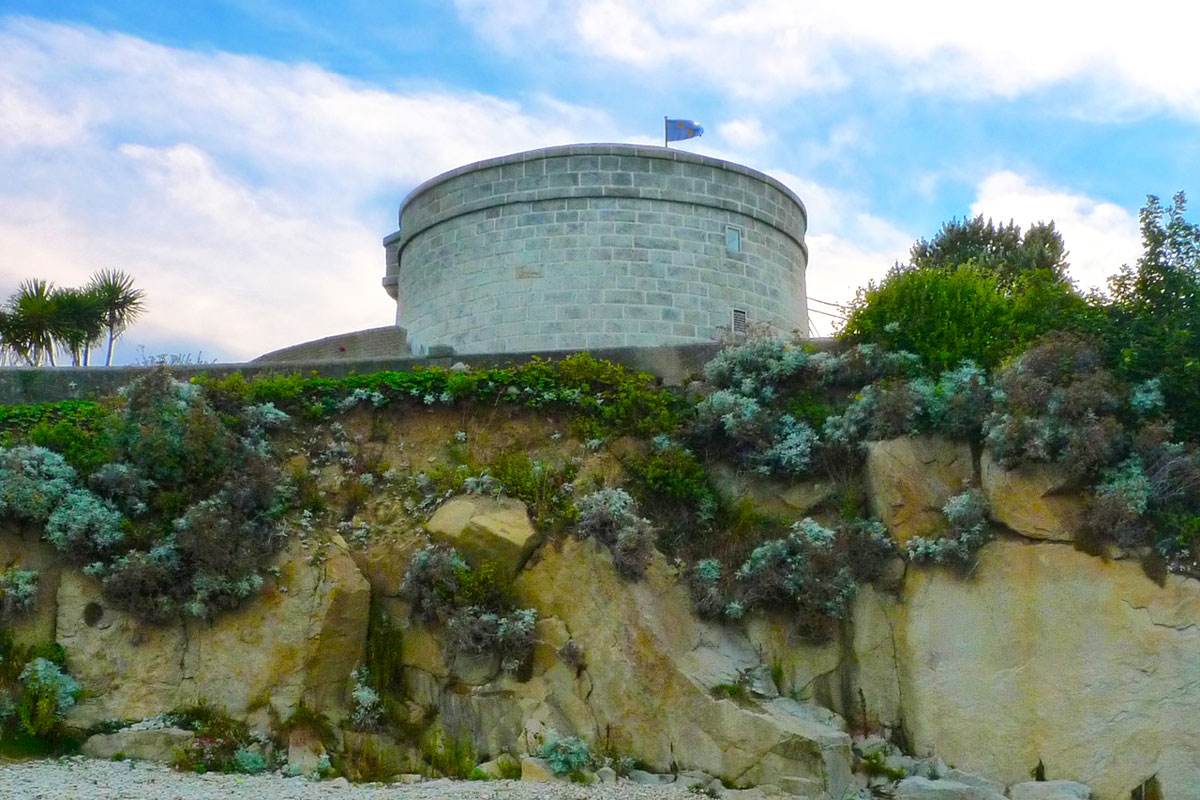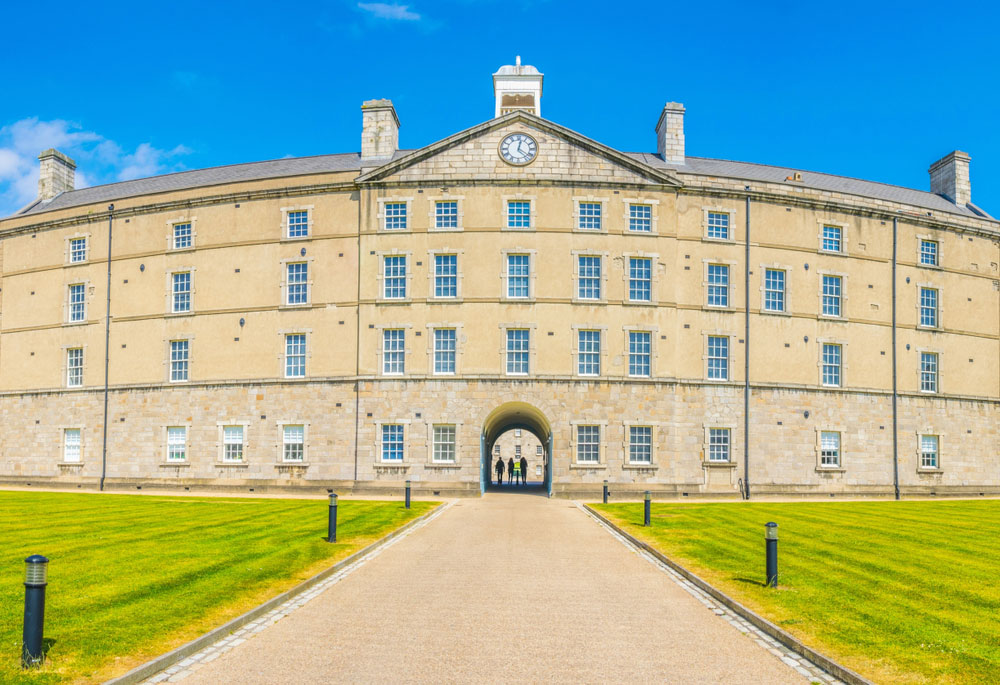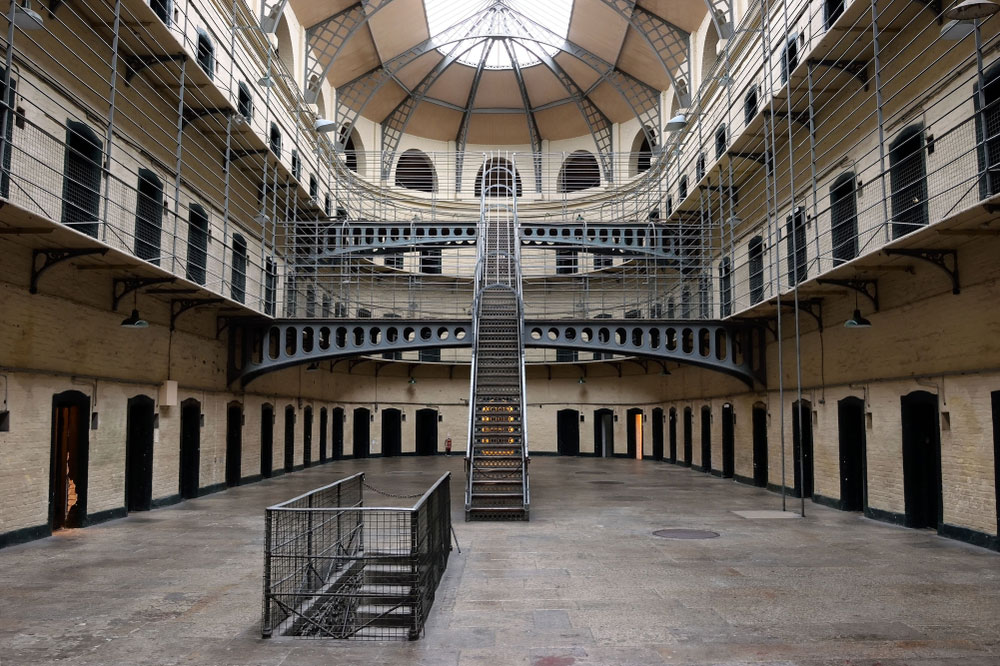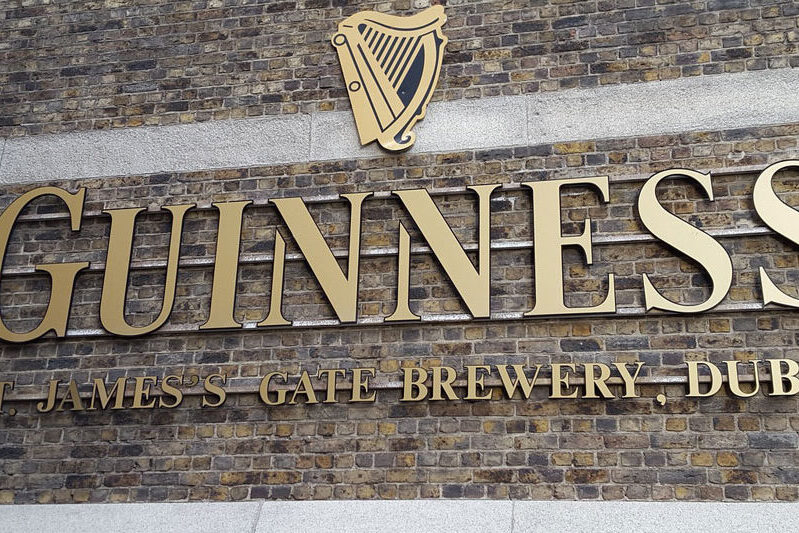Trinity College Dublin, sometimes known as TCD or just Trinity, is one of the world’s most famous universities and has been at the forefront of Irish higher education for 400 years. It is one of the city’s most famous landmarks and is located in the heart of Dublin, not far from Grafton Street.
Trinity College, founded in 1592 by Queen Elizabeth I, is both the oldest and most prestigious university in Ireland. Because of its association with English rule in Ireland at the time, the institution sparked a great deal of conflict and unrest. With the passage of time, however, it evolved into a model of learning and research that attracted some of the world’s brightest minds.
Trinity College is now recognized as one of Europe’s most distinguished research universities because of its longstanding tradition of academic excellence and pioneering spirit. Its massive campus occupies more than 47 acres of prime Dublin real estate and is home to about 17,000 students. Libraries, laboratories, lecture rooms, and student residence halls are just a few of the many facilities available on campus.
There is a vast list of notable people who attended Trinity College, including Nobel laureates, poets, politicians, and novelists including Samuel Beckett, Oscar Wilde, and Bram Stoker. Several of Ireland’s most famous writers, including Jonathan Swift and W.B. Yeats, attended Trinity, lending credence to the university’s long and storied literary tradition.
The Book of Kells
The Book of Kells is a priceless 9th-century manuscript treasured by scholars and visitors at Trinity College. The Book of Kells is an illuminated manuscript of the four gospels created by Irish monks about the year 800 A.D. They presumably created it at the monastery of Kells in County Meath. The book is considered to be among the world’s finest illuminated texts and a stunning example of early Christian art.
Over its 680 pages, the Book of Kells has artwork and calligraphy of extraordinary detail. Celtic knots, animals, and other fantastical creatures populate the intricate patterns and motifs that have made this literature famous. The whole book is covered with these patterns. The extraordinary quality of the paint and gold leaf used to create the document has allowed it to last for over 1,200 years without fading or cracking.
Around 200,000 additional rare volumes and manuscripts, including the Book of Kells, may be found in the Old Library at Trinity College. The Old Library is a public space and may be visited by anybody. The library’s Long Room is worth seeing in its own right since it is almost 200 feet long and has marble busts of famous writers and thinkers.
Trinity College is home to several well-known sites and structures that provide visitors with an insight into the university’s historic history and the spectacular architectural splendor that it has conserved over the years, including the amazing Book of Kells and Old Library.
The Campanile Tower
One of the most famous buildings on campus is the Campanile, a towering structure that stands over 100 feet tall and is easily recognizable to visitors. The tower, which dates back to the 1850s, is a symbol of the university’s storied past. It has become a prominent feature of the university’s landscape and a popular stop for visitors.
The Campanile was the brainchild of Sir Charles Lanyon, a famous architect of the time who designed many of Dublin’s most stunning buildings. It was built in lieu of a previous bell tower that had been destroyed by fire, and it was designed to be both functional and aesthetically pleasing. This new tower was built in lieu of the old bell tower.
The tower’s grand and stately appearance is due in large part to its stone construction and the many arches and columns that decorate it. At the highest pinnacle of the tower, you may find a bell that was initially cast in the 1860s and is still in use today. The bell is only rung to signal special events, such as graduations and other milestones, at the university.
Visitors at Trinity College may enjoy spectacular views of the city and its environs by ascending the Campanile. There are more than 200 steps leading up to the peak, making the trek a challenging one, but the rewards are well worth it. Visitors may get a bird’s-eye view of the campus and the surrounding area from the tower’s observation deck, and they can also see all the way across Dublin.
The Campanile is an iconic structure that has contributed much to the institution’s rich history and distinctive identity. Because of its well-known architecture and stunning views, it is a must-see for visitors to the university and continues to be one of Dublin’s most popular tourist attractions.
The Examination Hall at Trinity College
The Examination Hall at Trinity College has been there for two centuries, and it is a stunning example of Georgian architecture. It’s one of several well-known structures on the Trinity College campus. Following its completion in 1759, the building was first used as a meeting place and presentation venue. At the moment, it is the only place where exams may be taken by students at the school.
The Examination Hall is an impressive building from every angle. Its imposing front has a prominent pediment and a series of massive columns that together give the building an air of great importance. The hall’s inside is equally as stunning as its outside, with a grand staircase leading up to the main exam room.
The building’s main examination room is a spacious and well-appointed space bathed in natural light from the large windows that line three of the room’s walls. The room’s towering ceilings and intricate plasterwork lend to its air of opulence and sophistication. Students take their exams in this stunning venue, which has seen some of the university’s most momentous academic achievements throughout the years.
The Examination Hall is well-known not just among students and faculty but also among visitors to the main campus. Tourists from all over the world go here to marvel at the building’s historical significance and beautiful design, and the massive staircase and magnificent ceilings are popular photo ops.
It has also played an important role in the development of the college and the city of Dublin. The building’s outstanding Georgian architecture and superb interior make it a must-see for every campus visitor, and its continued usage as an exam location ensures it will play an essential part in the academic life of the university for years to come.

The Douglas Hyde Gallery
Art enthusiasts owe it to themselves to check out the Douglas Hyde Gallery. Unlike any other gallery in the city, this one is housed in a gorgeously converted church, making for a very unique and evocative atmosphere.
The gallery regularly hosts exhibits featuring the work of some of the most intriguing and innovative artists working today. The gallery’s exhibitions include modern works by both established and emerging artists from all over the world. The presentations have been carefully selected to provide the greatest possible experience for guests, and they include a wide variety of creative expressions such as painting, sculpture, video art, and installation art.
The gallery’s prime downtown location is only one of several factors that set the Douglas Hyde Gallery apart from the competition. The gallery itself is housed in a beautiful Georgian building that was originally built as a church in the early 19th century. It’s tall, arched windows and vaulted ceiling provide a distinctive and evocative setting for the displays, and the building’s past adds to the space’s air of character and charm.
The Douglas Hyde Gallery features the works of both established and emerging artists, so patrons can expect a diverse collection. The gallery’s exhibits change often so that visitors may see something new and exciting every time they stop by. It also hosts a number of talks, concerts, and other events throughout the year in addition to the exhibitions themselves. Visitors may have a deeper connection to the works on display via these interactive events.
If you have even a passing interest in contemporary art, you should definitely visit the Douglas Hyde Gallery. Because of its exceptional setting, wide range of exhibits, and commitment to showcasing works that are both innovative and amusing, it is one of the city’s most intriguing and active galleries. Whether you’re an art expert or a novice looking to broaden your horizons, a visit to the Douglas Hyde Gallery in Dublin will be a highlight of your time in the city.
The Science Gallery
On the Trinity College campus lies the Science Gallery, which aims to combine science with art in a way that is both original and enjoyable. The gallery features a wide range of exhibitions and interactive programs that explore themes at the crossroads of science, technology, and culture.
Trinity College Dublin’s Science Gallery is an internationally renowned cultural hub that seeks to bridge the gap between scientific inquiry and creative expression. The gallery has grown into a hub of creativity and activity since it first opened in 2008. It is presently the site of many exhibitions, events, and educational programs that explore the intersection of science, technology, and society.
The Science Gallery’s mission is to make learning about STEAM (science, technology, engineering, art, and mathematics) interesting, engaging, and accessible to as many people as possible. The gallery achieves its mission by organizing exhibitions, seminars, talks, and other events that pique visitors’ curiosity and encourage them to learn more about the topic.
One of the distinctive features of the Science Gallery is the focus it places on artistic pursuits and scientific inquiry. In order to investigate scientific concepts and ideas in novel ways, the gallery works with a wide range of academics, scientists, and artists. Exhibits like “In Case of Emergency,” which looked at people’s responses to catastrophes and crises, and “Infectious,” which explored the science and culture of contagion, are two examples of the innovative work that has arisen from this method. These two displays show what may be done when different fields of study are brought together.
Another major aspect of the Science Gallery is the institution’s commitment to public engagement and learning. The gallery hosts several lectures, talks, and other events for visitors of all ages to learn more about and develop an interest in science and technology. These gatherings encourage audience participation and provide opportunities for hands-on learning and networking with experts in the field.
Trinity College Dublin’s Science Gallery is an innovative and provocative venue that is broadening the horizons of what may be achieved at the intersection of science and art. The museum’s innovative displays, engaging activities, and commitment to public participation are helping to shape the future of STEAM education and inspiring the next generation of scientists, artists, and innovators.
The Berkeley Library
The Berkeley Library is a famous building on the Trinity College campus. It was named after Bishop George Berkeley, a philosopher from the 18th century who gave the college a large part of his library. The architect Paul Koralek made the plans for the library, and it was finished in 1967.
The Berkeley Library is the biggest library on the Trinity College campus. It has more than 2.5 million books and manuscripts. The library has books on a wide range of topics, but the humanities and social sciences are where most of the books are.
The exterior of the Berkeley Library is one of its most noticeable parts. The building is made up of a bunch of concrete blocks that fit together. Each block is stacked on top of the one below it at a slight angle. The result is a building with a modernist look that is different from any other on the Trinity College campus.
Inside the library, there are many places to study, read, and do research. The interior is modern and has a lot of space. The library’s books are spread out over several floors, and each floor is for a different subject.
There are also some rare books, manuscripts, and archives in the special collections at the Berkeley Library. There are a lot of early printed books and the personal papers of Irish writers like W.B. Yeats, Samuel Beckett, and Seamus Heaney in these collections.
Overall, anyone who is interested in books, history, or architecture should go to the Berkeley Library. It stands out on the Trinity College campus because of its unique design and impressive collections, which make it a useful tool for researchers and scholars.
Trinity College’s excellent collection of buildings and monuments gives visitors a rare glimpse into the college’s rich past and cultural significance. Whether one is interested in Irish history, Irish art, or Irish architecture, they will find something of interest at Trinity College.
Historical and Cultural Sites
- Trinity College and the Book of Kells – Home to Ireland’s greatest cultural treasure and the stunning Long Room Library.
- Dublin Castle – A historic site with a mix of medieval, Georgian, and Viking influences.
- Kilmainham Gaol – A former prison that played a pivotal role in Irish history, now a museum.
- Christ Church Cathedral – A magnificent medieval cathedral with a crypt and stunning architecture.
- St. Patrick’s Cathedral – Ireland’s largest church, associated with the famous saint.
Museums and Galleries
- National Museum of Ireland – Features exhibits on archaeology, natural history, and decorative arts.
- National Gallery of Ireland – Houses an impressive collection of European and Irish art.
- EPIC The Irish Emigration Museum – An interactive museum dedicated to Irish emigration history.
- Dublin Writers Museum – Celebrating Ireland’s literary heritage with exhibits on famous authors.
- Guinness Storehouse – A must-visit for beer enthusiasts, offering a journey through the history of Guinness.
Parks and Outdoor Spaces
- Phoenix Park – One of the largest city parks in Europe, home to Dublin Zoo and Áras an Uachtaráin (President’s residence).
- St. Stephen’s Green – A Victorian park in the heart of Dublin, perfect for a relaxing stroll.
- Iveagh Gardens – Known as Dublin’s “Secret Garden,” featuring waterfalls, grottos, and rose gardens.
- Bull Island – A UNESCO Biosphere Reserve with walking trails and sandy beaches.
- Howth Cliff Walk – A scenic coastal walk with breathtaking views of the Irish Sea.
Entertainment and Nightlife
- Temple Bar – Dublin’s cultural quarter, buzzing with pubs, restaurants, and live music.
- Grafton Street – A bustling shopping area with street performers and cafes.
- 3Arena – A top venue for concerts and live performances.
- The Abbey Theatre – Ireland’s national theatre, showcasing classic and contemporary plays.
- Croke Park Stadium and GAA Museum – Learn about Gaelic games and enjoy panoramic views from the Skyline tour.
Coastal Attractions
- Dún Laoghaire Harbour – A beautiful coastal area with a promenade, piers, and sailing activities.
- Malahide Castle and Gardens – A medieval castle surrounded by lush gardens and walking trails.
- Dalkey Village and Heritage Centre – A charming village with historical sites and scenic views.
- Portmarnock Beach – A sandy beach perfect for walks, kite surfing, and relaxation.
- Howth Harbour and Market – A picturesque fishing village with a weekend market and seafood restaurants.
Unique Experiences
- Dublin Bay Cruises – Explore the coastline with scenic boat tours.
- Viking Splash Tours – A fun and quirky way to see the city by land and water.
- Jameson Distillery Bow St. – Learn about Irish whiskey and enjoy a tasting session.
- National Leprechaun Museum – Dive into Irish folklore and myths in this interactive museum.
- Ha’penny Bridge – An iconic pedestrian bridge over the River Liffey, perfect for photos.
County Dublin offers a rich blend of history, culture, and modern attractions, making it a vibrant destination for all.
Helpful Resources





